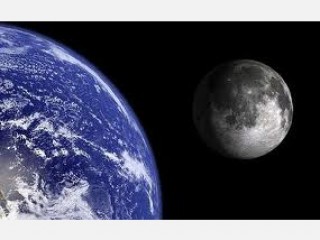Science and Technology

 Fierce and Fearless: Greta Gerwig's 'Barbie' Claims Title of Highest-Grossing Female-Directed Film
Fierce and Fearless: Greta Gerwig's 'Barbie' Claims Title of Highest-Grossing Female-Directed Film
added on Monday 24th July 2023

Supermoon occures on Saturday 19th March
On Saturday night, the sky will be filled with just that — a supermoon, or more technically a perigee moon.
The full moon of March will occur next Saturday on March 19, when the moon will be about 221,567 miles (356,577 kilometers) away from Earth. The average distance between the Earth and the moon is about 238.000 miles (382.900 km). And the last supermoon was 18 years ago.
Of course, the moon is the same size it's always been (about 2,150 miles or 3,476 kilometers in diameter), but it will appear about 14 percent bigger and 30 percent brighter than usual because it’s passing so close to Earth, according to NASA's website.
"The moon's orbit is not a perfect circle; it is slightly elliptical," said Manfred Cuntz, director of astronomy and associate professor of physics at the University of Texas at Arlington. "It happens now that the time that the moon is really close to the earth is also a full moon."
Cuntz said perigree (a Greek term used to describe the point when an orbiting object is closest to Earth) and blue moons don’t have much in common — aside from the fact that both are full.
"Some months have 28 days, and others have 30 or 31. Because the orbit of the moon takes 27 days, we usually have one full moon per month, but occasionally we have two. In this case, the second full moon is called a blue moon," he said.
Cuntz said that these full moons are even rarer than blue moons, which happen about once every 2 1/2 years. The last supermoon was recorded in 1993, and the next one won’t occur until 2029.
With any luck, North Texans won't have to wait another 18 years to see the close encounter. But cloudy conditions expected Saturday could spoil the show.
The tragic earthquake and tsunami in Japan Friday (March 11) set the Internet abuzz with the idea that the moon, which will be at its fullest of the year on March 19, played a role in the devastating natural disaster.
The full moon of March will occur next Saturday on March 19, when the moon will be about 221,567 miles (356,577 kilometers) away from Earth. The average distance between the Earth and the moon is about 238.000 miles (382.900 km). And the last supermoon was 18 years ago.
Of course, the moon is the same size it's always been (about 2,150 miles or 3,476 kilometers in diameter), but it will appear about 14 percent bigger and 30 percent brighter than usual because it’s passing so close to Earth, according to NASA's website.
"The moon's orbit is not a perfect circle; it is slightly elliptical," said Manfred Cuntz, director of astronomy and associate professor of physics at the University of Texas at Arlington. "It happens now that the time that the moon is really close to the earth is also a full moon."
Cuntz said perigree (a Greek term used to describe the point when an orbiting object is closest to Earth) and blue moons don’t have much in common — aside from the fact that both are full.
"Some months have 28 days, and others have 30 or 31. Because the orbit of the moon takes 27 days, we usually have one full moon per month, but occasionally we have two. In this case, the second full moon is called a blue moon," he said.
Cuntz said that these full moons are even rarer than blue moons, which happen about once every 2 1/2 years. The last supermoon was recorded in 1993, and the next one won’t occur until 2029.
With any luck, North Texans won't have to wait another 18 years to see the close encounter. But cloudy conditions expected Saturday could spoil the show.
The tragic earthquake and tsunami in Japan Friday (March 11) set the Internet abuzz with the idea that the moon, which will be at its fullest of the year on March 19, played a role in the devastating natural disaster.
 Fierce and Fearless: Greta Gerwig's 'Barbie' Claims Title of Highest-Grossing Female-Directed Film
Fierce and Fearless: Greta Gerwig's 'Barbie' Claims Title of Highest-Grossing Female-Directed Filmadded on Monday 24th July 2023













